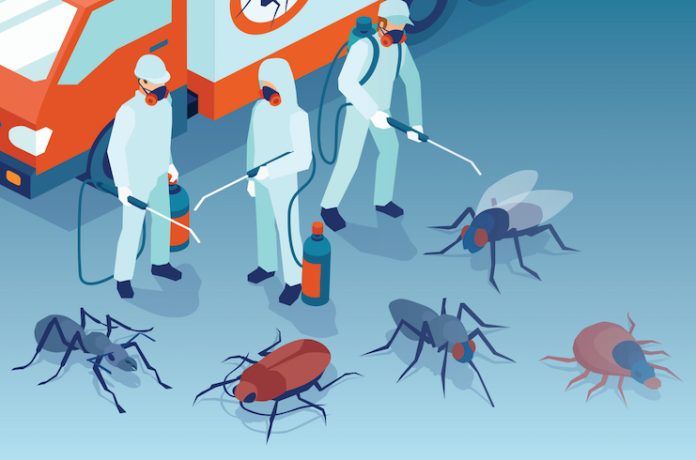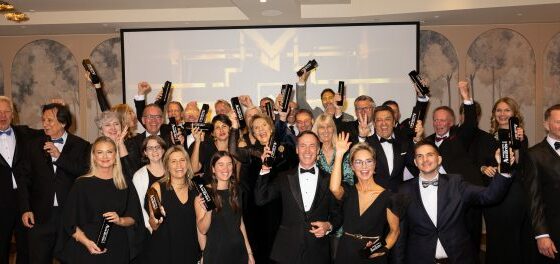
Like retail, office space, and other real estate sectors, the hotel industry must prioritize pest control. Moreover, hotels with onsite kitchens incur the infestation risks of the restaurant industry. Certain challenges in this area, however, are particular to hoteliers. For one, the “constant flow of traffic—guests coming and going from all over, many of whom took various forms of transportation to their destination—can lead to an increased risk of pest exposure, especially bed bugs,” observed Eric Braun, board-certified entomologist and technical service manager, Terminix.
In addition, negligence when it comes to bed bugs creates a risk of litigation. “Negligence arises when the hospitality business hasn’t done everything reasonably possible to protect and preserve the health and safety of their guests,” noted Rodger Williams, VP, general manager, Applied Science Labs. “If you were to Google ‘bed bug lawyers,’ you’d find several pages of law firms scattered throughout the United States. In legal terms, they are saying that bed bugs are foreseeable, like a fire is foreseeable. And a hotel innkeeper has a duty to provide for safety for their guests with fire alarms. So, if your guest is bitten, you’re liable.”
While bed bugs are the main challenge for hotels that focus on transient business, cockroaches are a bigger issue for extended stay, Braun said. “The long-term stay locations are like apartments, so they have the same pest issues that you would see in a traditional living space. Sometimes the sanitation that those guests perform isn’t the greatest, and housekeeping may not be coming into those spaces on a frequent basis. So, what we would like to do with extended-stay customers is set up a rotation where we’re getting into all units to perform an inspection, whether they’re occupied or not, because a problem that goes unnoticed for an extended time could lead to issues in other areas of the property.”
New Active Ingredients
To help meet these challenges, pesticide researchers over the years have tested and implemented new killing agents to keep pace with the resistance many pests develop. “Bed bugs are probably the most well-documented case of resistance because when they first came back in the early 2000s, the pyrethroid-based products we were using weren’t working very well against them,” Braun explained. “Since that time, newer products have been developed that bed bugs aren’t as resistant to, or are not at all resistant to, and that has made the service much more effective. So, there is a constant evolution of products in the pesticide business, and we’re always looking for what the new active ingredient is going to be that’s effective. Since the newer line of products has come out, I’ve noticed a reduction in the amount of heat treatments being performed, although it’s still a part of what we do.”
Advances have also been made in residual killing, and Applied Science’s research and products are an example. Williams explained the rationale behind the residual approach. “Sixty percent of the bed bug infestation is well hidden. The eggs are in arbitrary spaces in the walls and under the carpet. And whatever treatment you use, 10 to 14 days after that treatment, they come out hungry. So, your pest control company will come back and do a retreatment trying to kill them before the reproductive cycle. And if you miss some, a single female can regenerate the entire colony all by herself,” he said. “So, in 2010, we incorporated a residual killer into our product that allows a single treatment rather than multiple treatments. Soybean oil is the basic component; it goes through the proprietary process, and we encapsulate it.”
Ongoing Innovation
Pest control is a perennial challenge in the hospitality industry, but fortunately, research into new prevention and treatment methods is also ongoing. A case in point is the Rentokil Terminix Innovation Center, where a team of Ph.D.-level scientists with specialties in fields such as wood-destroying organisms and mosquito control focuses on developing cutting-edge pest control technology. The center’s resources include a built-in insectary for indigenous and global insects, three independent laboratories, and temperature-controlled environmental chambers.
One fairly recent innovation is remote monitoring for rodents. “It’s a new technology that hasn’t been utilized up until a few years ago, and we’re starting to see more engagement with that process,” said Braun. “We’re constantly working with our Innovation Center to develop new processes and techniques that would help not only us, but also the hospitality industry.”
Reducing Toxicity: Greener and Safer Pest Treatments
Hoteliers concerned about the safety of pesticides for their guests and staff can rest assured that the pest control industry has been improving its solutions in that respect. “In recent decades, an increasing number of pesticides have been restricted or banned due to well-known environmental and health concerns, shifting our focus to more environmentally responsible treatments,” said Eric Braun, technical service manager, Terminix. “Pest controllers need to develop sustainable solutions that reduce the use of harmful, toxic chemicals but are equally as effective.”
In addition to EPA-approved pesticides—designed not to be harmful to people or pets if used properly—“green” products have come on the market, which typically use plant-derived oils. Applied Science Labs, for example, offers 100 percent nontoxic bed bug elimination and prevention products. “The field trials all show these products are as efficacious as any pesticide that’s toxic,” said Rodger Williams, VP, general manager. “Only in the last few years, however, we’ve become price competitive. For many years, it was a premium [treatment], but not anymore.” Williams explained that the use of essential oils drove up the price for nontoxic solutions, but Applied Science Labs uses soybean oil as a cost-effective alternative.
Terminix’s Integrated Pest Management (IPM) approach emphasizes the use of toxic chemicals only where necessary to remove an infestation. “Although this method is not exactly ‘new,’ it is ever evolving and helps to reduce the use of toxic chemicals,” Braun said. “IPM uses a range of techniques to prevent pest infestations, including removing food sources that attract pests, surveying premises to identify the potential pest entry points, and applying physical measures that prevent pests from entering buildings.” He added that there are plenty of measures that avoid pesticides altogether, including heat treatments, baits, and desiccant dust. GS






